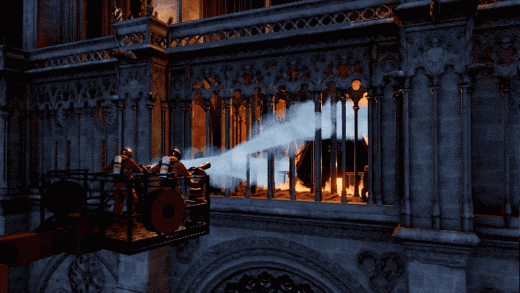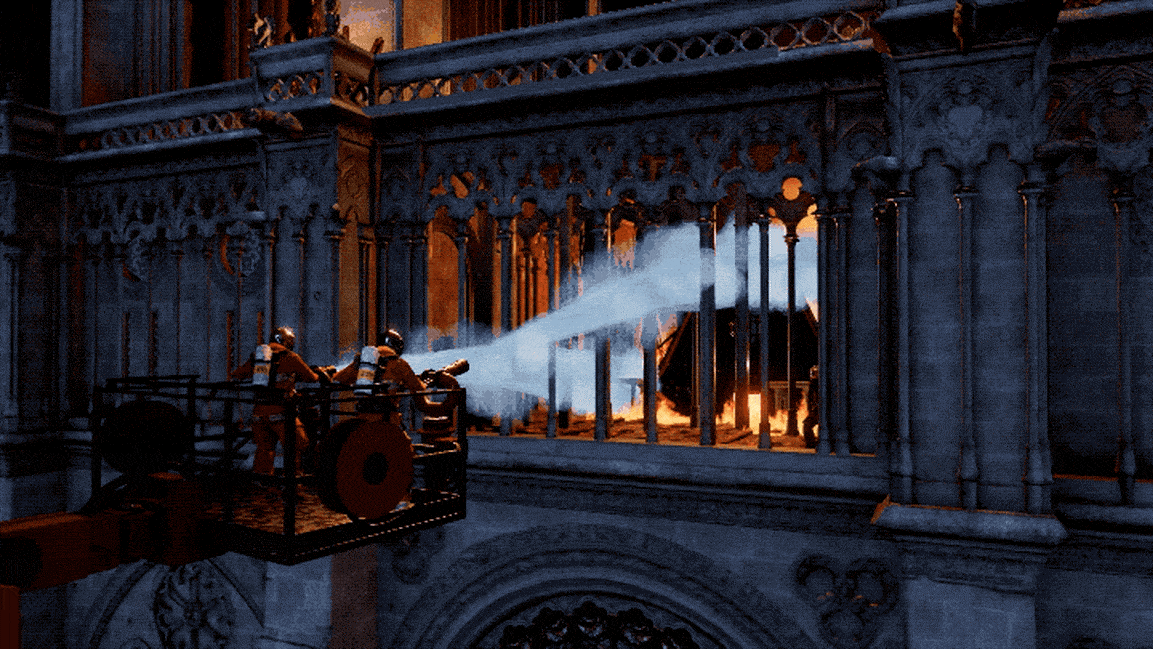3 years ago Notre-Dame caught on fire. This video game lets you fight to save it
On April 15, 2019, when the Notre-Dame cathedral in central Paris caught on fire, a certain subset of people around the world couldn’t help but think about a 5-year-old video game. Assassin’s Creed Unity is a 2014 video game set in Paris in 1789 that includes a surprisingly detailed digital model of the cathedral. In the game, players roam through the church and climb into its highest points—actions that gave gamers a deep familiarity with the building. Seeing it burn in news reports and social media videos in 2019, some gamers were reminded of the hours spent climbing through the building in the video game. Some even wondered if the digital version of the cathedral might be useful in rebuilding the damaged structure.
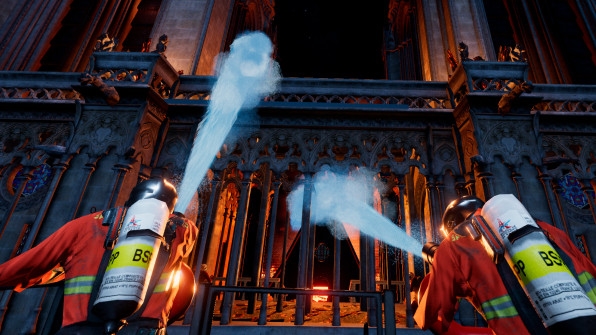
The video game version of the cathedral wasn’t detailed enough for that kind of forensic research, but the makers of the game did find a way to put their version of Notre-Dame back to work. Today, Ubisoft is releasing Save Notre-Dame on Fire, a virtual reality game set inside the cathedral on the day of the fire.
“We’re almost on a one-to-one scale. We have all the immensity of the real Notre-Dame,” says Deborah Papiernik, a senior vice president at Ubisoft who led the development of the game.
The model may not be accurate enough to help in the building’s restoration, but it is accurate enough to recreate the harrowing experience of the firefighters who rushed into the burning church. The game recreates this experience for virtual reality headsets. Players act as firefighters tasked with putting out the flames, and also finding and saving a chest containing the famed crown of thorns supposedly placed on Jesus during his crucifixion.
The architecture of the building is a key part of the gameplay, in which players have to navigate tight spaces and burning parts of the structure without falling. Players work alongside each other to put out the flames before they can take down the belfry, a real-life challenge faced by firefighters trying to save the historic bells in the church and the wooden beams supporting them. “We’re using real elements form the architecture to create something that’s interesting for the player,” says Papiernik. “We’re kind of playing with the building.”
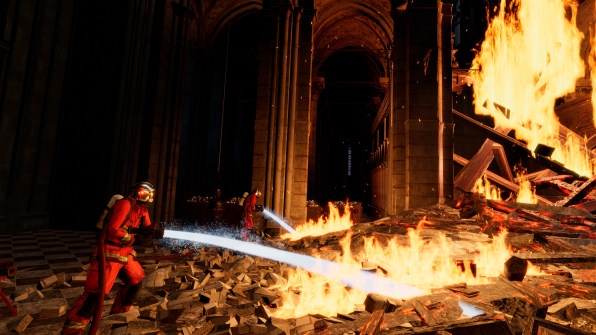
The game was produced as a companion to a French film that fictionalized the fire, Notre-Dame Brule. Co-written and directed by Jean-Jacques Annaud, the film retells the story of the fire and the effort to save the cathedral, based on detailed interviews with many of the key people involved. Annaud originally approached Ubisoft about creating a video game to go along with his film, and his research was integrated into the development of Ubisoft’s VR game. “He is the most knowledgeable person in the world about what happened minute by minute,” says Papiernik.
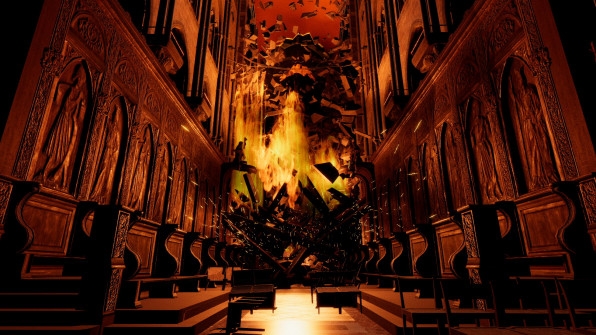
The game is one of several escape-style virtual reality games Ubisoft has produced, and each is intended to be played not at home alone but in groups of two to four inside dedicated VR venues.
Papiernik says the VR version of the cathedral in Save Notre-Dame on Fire is intended to give people a way to experience the space and understand the importance of rebuilding it, and is a kind of edu-tainment addition to the company’s previous donation of about $565,000 for the restoration of a building that features so prominently in Assassin’s Creed Unity.
Still, astute players of Assassin’s Creed Unity may have noticed that the version of Notre-Dame featured in the game isn’t what the cathedral would have looked like back in 1789. The game’s version was based on the cathedral as it was renovated in the mid-1800s, with the famed spire added on top. This is the version of the church that’s still standing today, and the one severely damaged in the 2019 fire. “We wanted Notre-Dame to be recognizable,” Papiernik says of that decision. “We know that without the spire, the gargoyles, Notre-Dame is not recognizable.”
(34)

